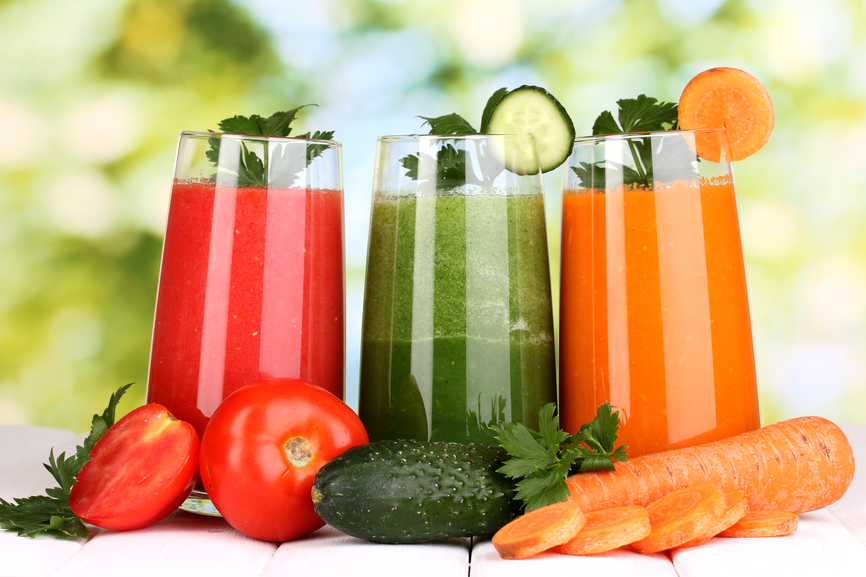Cupcakes are out and pressed juice bars are in – it’s official, and the reason I happen to know this is because when the line goes down to zero outside the tiny Sprinkles cupcake store in Beverly Hills, and right next door, Kreation Juicery has a line going around the block – well…point made! And despite the sticker shock on one of these high end juices, it’s obviously a good thing for our health because unless you are eating a cupcake made almost entirely from superfoods (which wouldn’t taste as good as a Sprinkles cake,) you’re pretty much eating a nutrient-free, sugar-stuffed treat instead of a nutrient packed thirst-quencher. It’s clearly a fad, but in my opinion, a fad that will last a long time. Right now there are at least 5 major pressed juice chains in Los Angeles: Pressed Juicery, Kreation, Clover, Juice Farm, and Blue Print.
The trend is pressed juice, as opposed to “regular” juice. And this is where my husband was very confused. “What the heck is the difference?” he muttered, as I asked asked him to shell out a extra few bucks for my Persian Ageless Miracle juice from Kreation, “We’ve got a juicer at home, haven’t we?” he continued as I chugged down my miracle cure-all beverage. Well “Yes,” I said, “We do have a juicer but not a cold-pressed juicer.” I looked at him and realized that he’d already totally switched off in anticipation of an organic/cold-pressed/this-is-much-better-for-you-than-anything-else diatribe. I didn’t dare venture into the differences between the different juice bars and why some are more expensive than others (glass or plastic bottles, organic and/or sustainable etc).
But, please let me explain the difference to you because it IS important:
1. A “regular” juicer, which everyone had before the trendy cold-pressing thing came along is also known as a “centrifugal” juicer because it has a central spinning blade which juices up your fruits and veggies. In the raw/organic/health nut world, this kind of juicer is the devil incarnate because the spinning blade slightly heats up, which ostensibly kills off some of the delicate enzymes. This obviously doesn’t mean your juice comes out warm, because it doesn’t, so the heating actions is clearly very slight, but apparently enough do to the damage. If you get one of these juicers, the Breville Juice Fountain is a good choice because it has a soft fruit setting for your soft fruits and green leaves.
2. A cold-pressed juicer or “masticating” juicer is the new must-have kitchen gadget because it presses the veggies and fruits down without any kind of heat and thus they retain their full quota of nutrients. But a cold-pressed juicer like the Omega Masticating Juicer will cost you more, and will take up more of your precious counter space. The other advantage of this model is that it will press nuts to make nut “mylk” and is great if you juice tons of greens because you get more juice out.
Honestly, if you have the space and money, it would be great to get the Omega Juicer, but don’t think you’re drinking a nutrient-less, low -quality juice if you go with a regular juicer. Either works just fine. It’s more important that you use really fresh, organic fruits and veggies, and drink it as soon as you’ve pressed or juiced it. Keep in mind the longer it sits in a bottle on a store shelf, the fewer the nutrients it contains.
On a final note, juice cleanses are big business right now. All of the juice chains offer cleansing programs. Although this is good in theory, I personally think you are better off adding smoothies containing all kinds of fiber and pro-biotics when juice cleansing. Also keep in mind that a juice cleanse is way short of a miraculous short-cut to health and weight-loss. If you are thinking of a cleanse for health issues, you are much better off consulting with a nutritional coach or naturopathic doctor to find out if you are a good candidate, and what you might specifically need to add or eliminate pertaining to your particular health issues.



